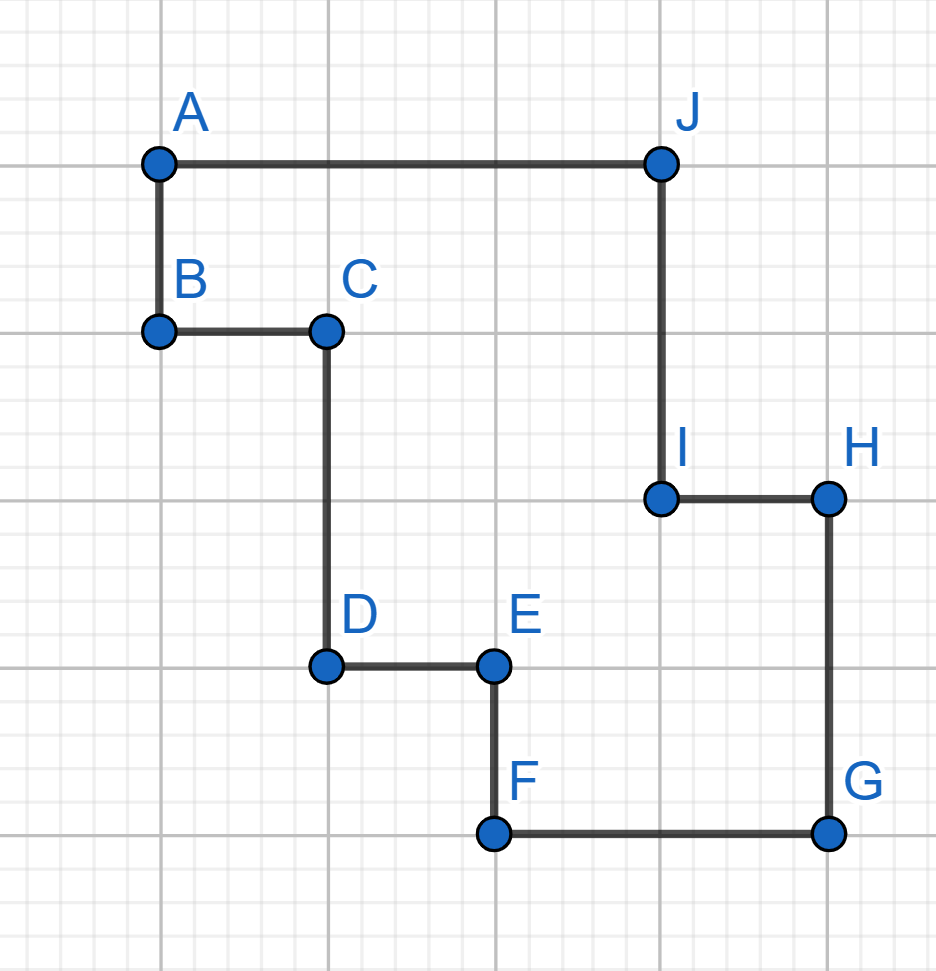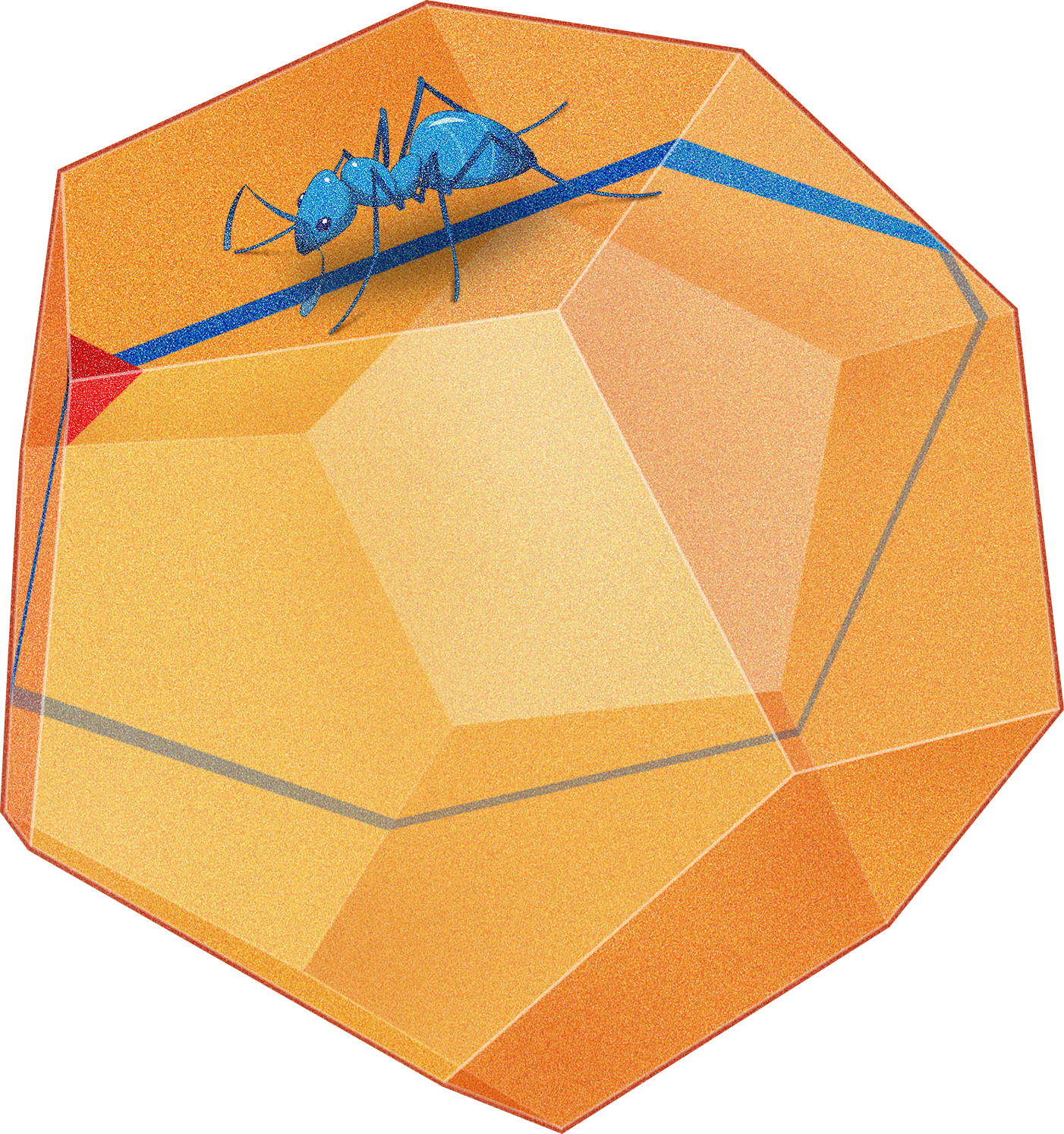Problems
How many \(7\)-digit numbers, larger than \(6\) million, are there such that the product of their digits is \(42\)?
On a sheet of paper a grid of \(n\) horizontal and \(n\) vertical straight lines is drawn. How many different closed \(2n\)-link broken lines can be drawn along the grid lines so that each broken line passes through all horizontal and all vertical straight lines? On the diagram below you can see an example of a closed broken line for \(n = 5\).

Find the largest number \(A\) such that for each permutation of the set \(\{1,2,3, \dots, 100\}\), the sum of some \(10\) consecutive terms of that permutation is at least equal to \(A\).
The ant crawls a closed path along the edges of the dodecahedron, not turning back anywhere. The path runs exactly twice on each edge. Prove that the ant crawls on some edge of the dodecahedron in the same direction both times.

Given a pile of cards, is it true that reversing the order of the pile by counting the cards out one by one leaves no card in its original position?
How many permutations of \(13\) cards swap the third card and the fourth card?
Consider lifting the top \(2\) cards from a pile of \(6\) cards and placing them at the bottom of the pile. Show how the same process can be done by switching adjacent pairs of cards.
Lennart is a skilled magician - he can shuffle a deck of card in the most arbitrary ways and replicate the shuffle. Once he performed a terribly complicated shuffle and repeated it right away. It turned out all the cards returned to their original position. Show that this complicated shuffle consists of only switching distinct pairs of cards (or keeping some cards where they are).
Take Ace to King of any one suit to make a pile. The cards are in numerical order, so that Ace is at the top and King is at the bottom. Count out four cards from the top one by one and put the rest of the pile on top of the four cards.
If you perform this action a total of \(7\) times, what is now the top card?
Here is a half of a magic trick to impress your friends. Take the Ace to Seven of hearts and order them numerically in a pile with Ace at the bottom and Seven at the top. Do the same with the Ace to Seven of spades. Put the pile of spades on top of the pile of hearts. Flip the \(14\)-card deck so the cards are now face down.
Make a cut anywhere. Deal out \(7\) cards from the top into a pile, so that you now have two piles of equal size again. Let us refer to the motion of taking the top card of a pile and putting it to the bottom as making a swap. Making two swaps means doing the motion twice, NOT taking the top two cards at the same time.
Your friend chooses two nonnegative numbers that add up to \(6\), for example \(4\) and \(2\). Make \(4\) swaps on the first pile and \(2\) swaps on the second pile. Remove the top card of each pile, so that we now have two piles of six cards.
Your friend now chooses two nonnegative numbers that add up to five and repeat the same procedure. We will continue doing this, but at each turn, the total number of swaps decreases by one. Eventually, we should have one card remaining in each pile. It turns out to be a matching pair.
How does the trick work?